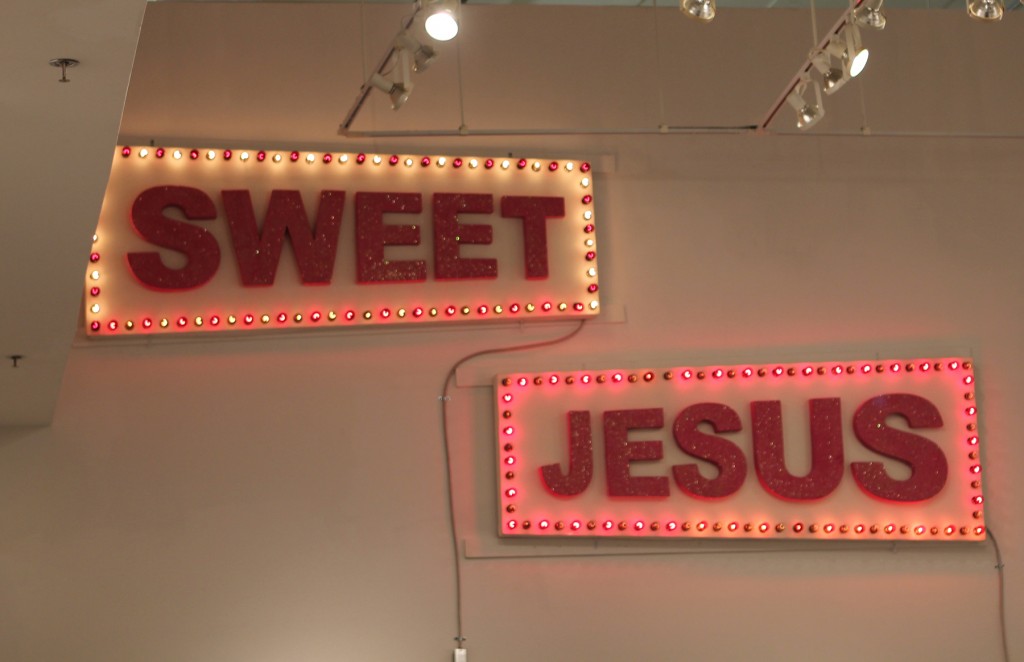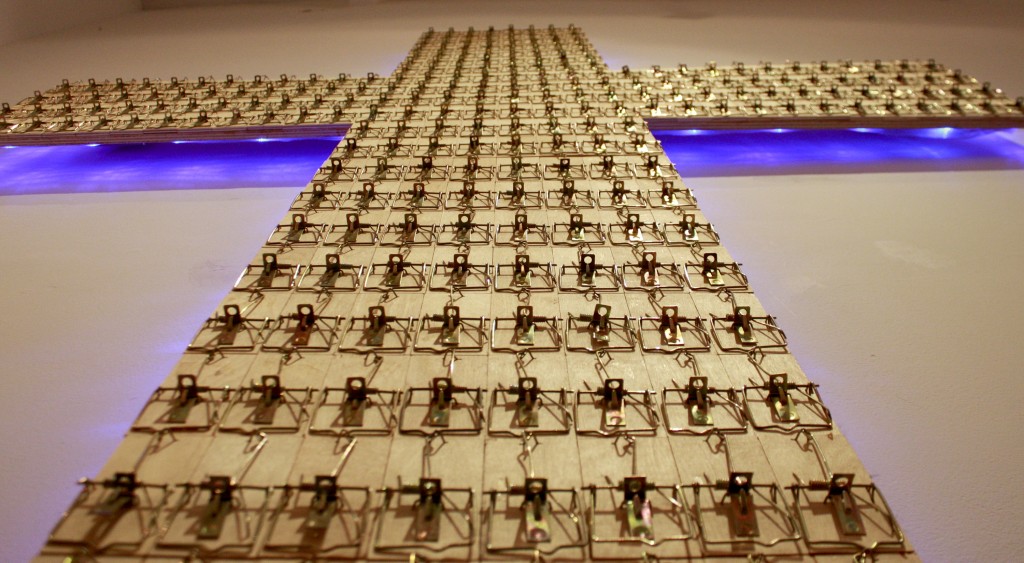
Some views of “The Afterlife”
Even on a busy afternoon on Lincoln Road, the sound art emanating from under the eaves of the ArtCenter/South Florida (a Knight Arts grantee) is clearly audible, and a seductive invitation to visit more inside. The music is from Gustavo Matamoros and the Listening Gallery (also a grantee), and this composition complements the exhibit currently up in the main gallery, “The Afterlife.”
Most concepts of the afterlife involve a form of religion, and of course a somberness associated with death and the unknown world that will follow. The pieces from the three artists here are no exception. There is common iconic imagery, Jesus and symbols from Christianity predominating in the sculptures and paintings. Sometimes dark, sometimes challenging – and even humorous. In fact, the most prominent work can be seen day and night from the Road (the great thing about the ArtCenter is that you can look in through the windowed walls anytime, access to the people!): it’s two lit-up neon panels announcing “Sweet Jesus,” from Alex Heria. His work, seen before at the ArtCenter and elsewhere, is always exciting to encounter. He has a number of other pieces here, including a couple of Swarovski-crystal Christ sculptures, one called “Bling Jesus.”
“Religious Trap” by Byron Keith Byrd.
Maybe the most provocative is a giant cross, also with a light element from Byron Keith Byrd. Hundreds of mousetraps are fastened together to create the cross, which is back-lit in blue, and suggests a more sinister journey from this life to the next, one trapped in ideologies that will restrain rather than set us free. In that vein, Byrd has also made a goldleaf and wood sculpture of a crutch. Byrd spreads his time between Southern California and Southern Florida.
“A Life’s Journey Altar” by Franklin Sinanan.
Franklin Sinanan, a Trinidad native and resident artist at the ArtCenter, brings in the most obvious Caribbean-based religious references, in his paintings and “A Life’s Journey Altar.” The latter is a sculpture festooned with masks, heads (or skulls), crosses, candles, beads and other items associated with vodoo or Santeria-type altars, and some Eastern imagery as well. All these works deal with how we relate to the afterlife — with those who have gone before and how we will handle it when our time comes — but this piece seems a little over the top in throwing it all into the pot at once.
But then, since what happens after death has been the most confounding mystery for humans of all religions, all across the globe, all throughout the ages, why not be safe and mix it all up?
“The Afterlife” runs through Aug. 5 at the ArtCenter/South Florida Richard Shack Gallery, 800 Lincoln Rd., Miami Beach; www.artcentersf.org.
Recent Content
-
Artsarticle ·
-
Artsarticle ·
-
Artsarticle ·


